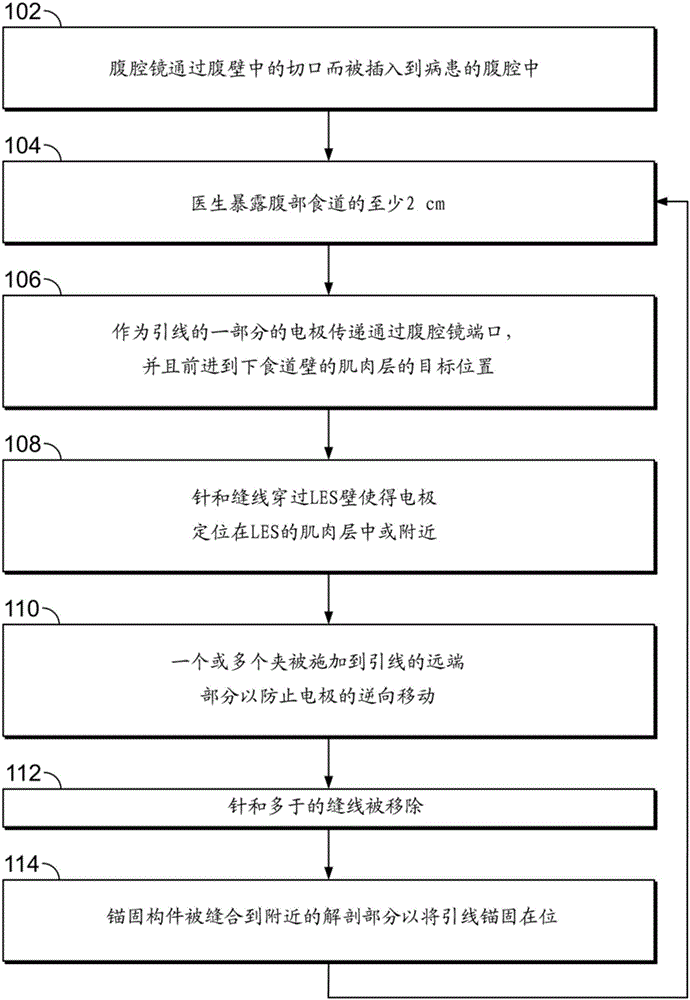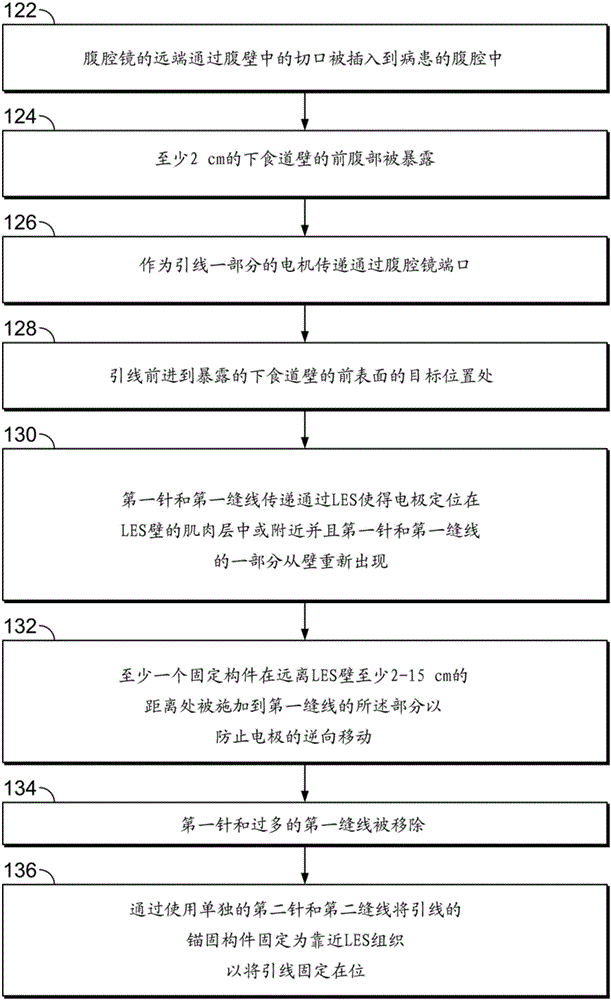Lead implantation method
A lead and conductive lead technology, applied in the field of laparoscopic implantation, can solve the problems of ineffective treatment, shedding, and difficulty in preventing lead wires from being realized, etc.
- Summary
- Abstract
- Description
- Claims
- Application Information
AI Technical Summary
Problems solved by technology
Method used
Image
Examples
Embodiment Construction
[0046] This specification discloses a laparoscopic implantation of a movable plurality of stimulation leads into the wall of the esophagus for use in the treatment of at least one gastrointestinal disorder such as gastroesophageal reflux disease (GERD) electrical stimulation system use together. In various embodiments, a stimulation lead is defined as a lead having one or more stimulation electrodes. In one embodiment, the stimulation lead comprises a straight lead having one stimulation electrode. In one embodiment, the stimulation lead comprises a bipolar lead having two stimulation electrodes. It should be understood that stimulation leads having any number of stimulation electrodes may be used with the methods of the present description. The distal end of the laparoscope is inserted into the patient's abdominal cavity through an incision in the patient's abdominal wall. The doctor then exposes at least 2 cm of the abdominal esophagus. At least one stimulation lead is p...
PUM
 Login to View More
Login to View More Abstract
Description
Claims
Application Information
 Login to View More
Login to View More - R&D
- Intellectual Property
- Life Sciences
- Materials
- Tech Scout
- Unparalleled Data Quality
- Higher Quality Content
- 60% Fewer Hallucinations
Browse by: Latest US Patents, China's latest patents, Technical Efficacy Thesaurus, Application Domain, Technology Topic, Popular Technical Reports.
© 2025 PatSnap. All rights reserved.Legal|Privacy policy|Modern Slavery Act Transparency Statement|Sitemap|About US| Contact US: help@patsnap.com



